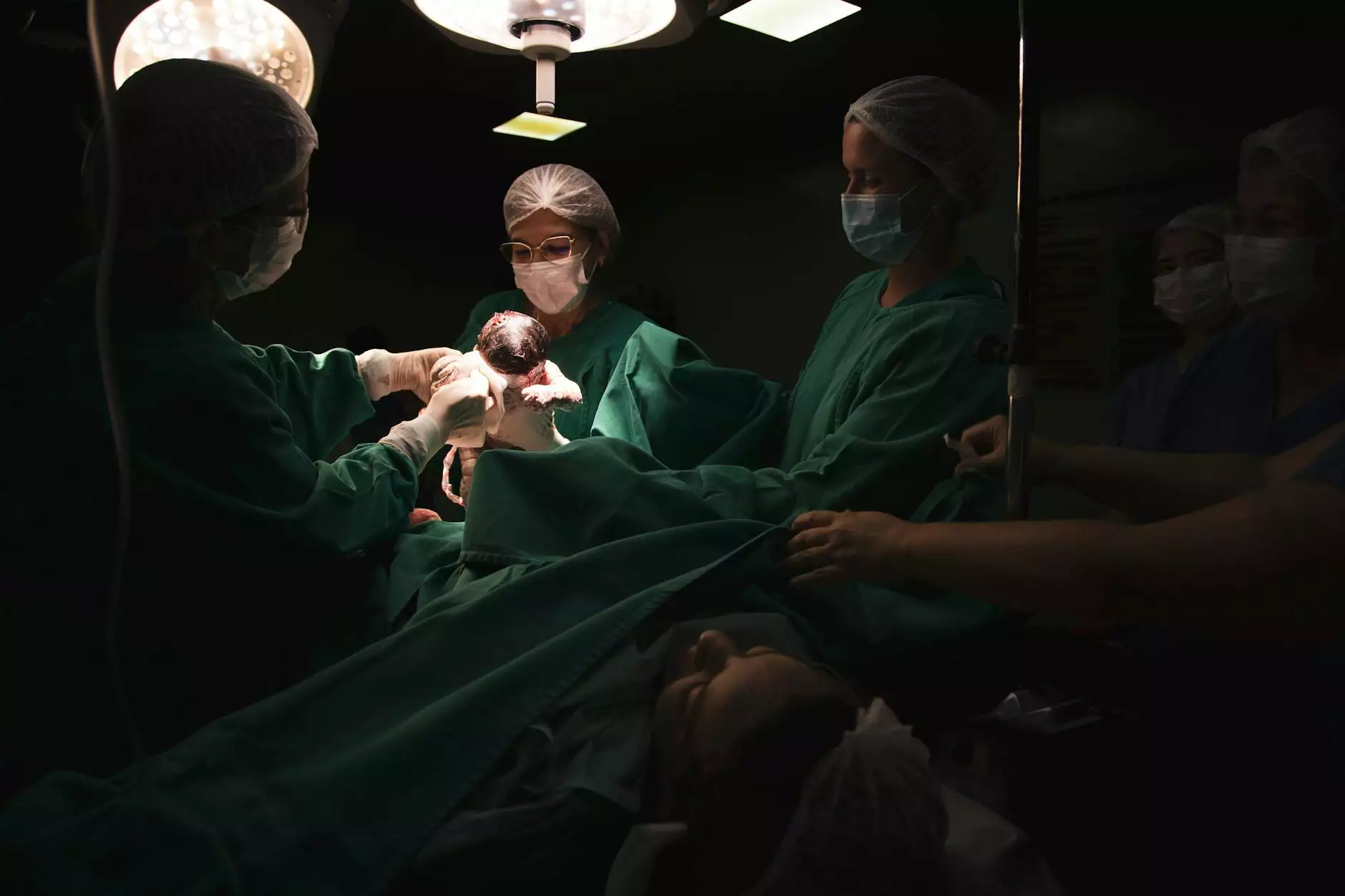Pneumothorax Treatment Surgery: A Comprehensive Guide

Pneumothorax is a medical condition that occurs when air leaks into the pleural space between the lungs and the chest wall. This condition can be life-threatening and requires prompt medical attention. Understanding the intricacies of pneumothorax treatment surgery not only helps patients make informed decisions but also empowers them to discuss their options with healthcare providers confidently.
Understanding Pneumothorax
A pneumothorax can arise from various causes, including:
- Spontaneous Pneumothorax: Occurs without any apparent cause, often in tall, young males.
- Traumatic Pneumothorax: Results from physical injury to the chest wall, such as fractures or penetrating injuries.
- Secondary Pneumothorax: Occurs in individuals with existing lung diseases, such as COPD or cystic fibrosis.
Symptoms of Pneumothorax
Recognizing the symptoms of pneumothorax is crucial for timely intervention. Common symptoms include:
- Sudden chest pain: This pain can be sharp and may worsen with breathing.
- Shortness of breath: Patients may experience difficulty breathing, particularly during physical activity.
- Rapid breathing and heart rate: These are signs of increased respiratory distress.
Diagnosis of Pneumothorax
Diagnosing a pneumothorax involves a thorough medical history and physical examination. Physicians often utilize:
- Chest X-ray: The primary imaging technique used to confirm the presence of air in the pleural space.
- CT Scan: Provides a more detailed image of the chest and is used in complicated cases.
Pneumothorax Treatment Options
Treatment for pneumothorax largely depends on the size of the pneumothorax and the severity of symptoms. Treatment options include:
Observation
In small pneumothoraces, especially when symptoms are mild, doctors may recommend a period of observation. This involves:
- Regular monitoring: Patients may be asked to return for repeat X-rays to ensure the pneumothorax is not expanding.
- Breathing exercises: To promote lung expansion and prevent complications.
Dainage Procedures
For larger pneumothoraces or when patients experience significant distress, drainage procedures may be warranted:
- Needle Decompression: A medical professional uses a needle and catheter to relieve pressure in the pleural space.
- Chest Tube Placement: A flexible tube is inserted to continuously drain air and allow the lung to re-expand.
Pneumothorax Treatment Surgery
In more severe cases, especially for recurrent pneumothoraces, surgical intervention may be necessary. Pneumothorax treatment surgery options include:
Video-Assisted Thoracoscopic Surgery (VATS)
This minimally invasive procedure involves:
- Small incisions: This reduces recovery time and minimizes scarring.
- Direct visualization: Surgeons use a camera to locate the site of the leak and repair it.
Thoracotomy
In more severe cases, a thoracotomy may be necessary, involving a larger incision to allow for a comprehensive inspection and repair of the lung. This may include:
- Resection of lung tissue: If there are cysts or blebs that are prone to causing additional pneumothoraces.
- Pleurodesis: A procedure to adhere the lung to the chest wall, reducing the risk of future occurrences.
Recovery After Pneumothorax Treatment Surgery
Recovery from pneumothorax treatment surgery varies based on the procedure performed. Key aspects of recovery include:
- Pain Management: Adequate pain control is essential, often involving medications.
- Activity Modification: Patients may be advised to limit physical activity for several weeks to avoid complications.
- Follow-up Care: Regular follow-up appointments are critical to monitor lung function and ensure proper healing.
Complications of Pneumothorax Treatment Surgery
While the surgical treatment of pneumothorax is often successful, potential complications can arise, including:
- Infection: As with any surgical procedure, there is a risk of postoperative infection.
- Bleeding: Excessive bleeding can occur, which might require additional interventions.
- Recurring Pneumothorax: In some cases, patients may experience a recurrence, necessitating further treatment.
When to Seek Immediate Medical Attention
Patients should be aware of red flags that warrant immediate medical attention, such as:
- Worsening difficulty to breathe: Sudden or severe shortness of breath that escalates.
- Increased pain: Chest pain that becomes unbearable or intensifies significantly.
- Blue discoloration: Bluish tint to lips or face, indicating oxygen deprivation.
The Role of Neumark Surgery in Pneumothorax Treatment
Neumark Surgery is committed to providing top-tier surgical services for patients suffering from pneumothorax and other thoracic conditions. Our expert team of surgeons emphasizes
- State-of-the-art technology: Utilizing the latest techniques for minimal invasiveness and enhanced recovery.
- Personalized care: Understanding each patient’s unique circumstances and tailoring treatment accordingly.
- Ongoing support: Offering comprehensive follow-up care to ensure optimal recovery and lung health.
Conclusion
Understanding pneumothorax treatment surgery is crucial for anyone facing this challenging condition. With advancements in medical technology and surgical techniques, patients can achieve positive outcomes through proper diagnosis and treatment. It’s essential to communicate openly with your healthcare provider, ensuring you receive the best possible care tailored to your individual needs.
For more information and expert opinions, visit us at neumarksurgery.com, where we prioritize your health and wellbeing.
pneumothorax treatment surgery








